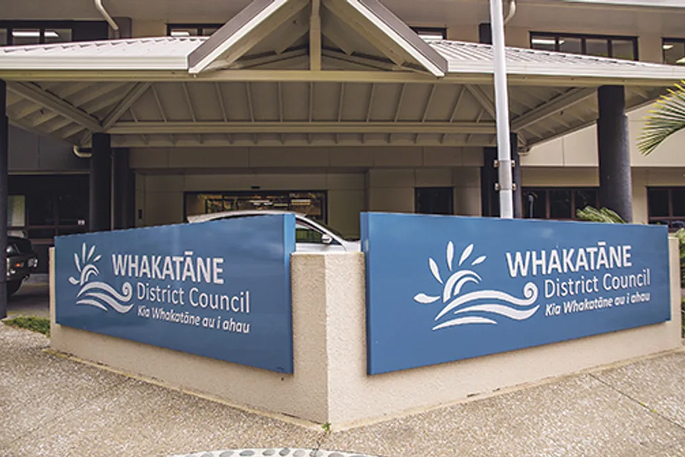Whakatāne District Council has improved relationships with Māori but more work needs to be done just to keep up with legislative requirements and population growth.
This was the underlying message to Whakatāne District Council's Living Together Committee from strategic Māori partnership general manager Paul Warbrick at a meeting last week, as he updated the committee on progress made over the past year.
Two-and-a-half years after adopting the strengthening of whānau, hapū and iwi relationships as a strategic priority in its long-term plan, Warbrick now leads team of three other staff members dedicated to relationship building with Māori.
He said along with two members of the rates team they were the only staff members with purely Māori-focused roles.
Benefits included regular formal and informal conversations with all seven iwi authorities in the district which had led to opportunities and mutual problem solving. These included with some community members who would previously have sworn never to engage with the council. Significantly, there had been no new litigation with the council over the past two years.
Warbrick outlined the district profile, which showed percentages of Māori were growing. In the 2021 Long Term Plan it was said to be 46.8 percent.
While data from the 2023 Census isn't expected to be released until May next year, Warbrick said there had been some early indications that the district's Māori population would be announced as being 53 percent.
There were seven iwi with Treaty of Waitangi settlements within the district boundary the council has legislative obligations to consult with. The council would also need to have a conversation with Whakatōhea, once it settles with the Crown.
 Whakatāne District Council strategic Māori partnership general manager Paul Warbrick. Photo: Supplied / Whakatāne District Council.
Whakatāne District Council strategic Māori partnership general manager Paul Warbrick. Photo: Supplied / Whakatāne District Council."Because their area does intersect into Ohiwa. It may have an impact on us. We could be looking at eight iwi."
He also talked about what implications the Marine and Coastal Area Act may have for the council.
"There are currently 18 applicants that intersect the Whakatāne district boundary ... We are expecting that number to grow. Some of those applicants are quite independent of the iwi authorities. We've got a significant tranche of work to understand what that means for us.
"Any asset, a pipe, a wharf, a ramp, between the median and high water mark is implicated. So if you think about our water consenting that's coming up in the next few years, all those assets that drain into the sea or drain into a high water mark, quite simply, those applicants can veto that application for renewal or variation.
He said Whakatāne District Council vested less than 3 percent of its annual expenditure on relationships with Māori. It needed to be looking past legislative requirements and "targeting investment into the Māori space".
"I'll use the words of councillor Tanczos, 'We don't want to be just doing legislative work, we want to be richer than that. We want to be doing it for the right reasons. If we focus on doing it for the right reasons we will mop up the legislative requirements. If we focus on the legislative requirements we will always be defending what it isn't'."
Deputy Mayor Lesley Immink said she took heart from the work Warbrick and his team had done and expressed a desire to provide further resource.
"The team that we have here needs to be developed and resourced like a ministry for Māori, because they thread through every aspect of our lives. If we don't resource them appropriately, we won't be getting the results we need. It seems a bit incongruous to give that sort of analogy. But we see with the census, just in itself, we need to be more competent and that's why we need it to grow.
"Whether it's a road name, a street sign, a consent, putting a piece of pipe in the ground, we actually can't bury our heads in the sand any longer and say it's a Māori thing. This actually is a community thing."
-Local Democracy Reporting is Public Interest Journalism funded through NZ On Air



0 comments
Leave a Comment
You must be logged in to make a comment.